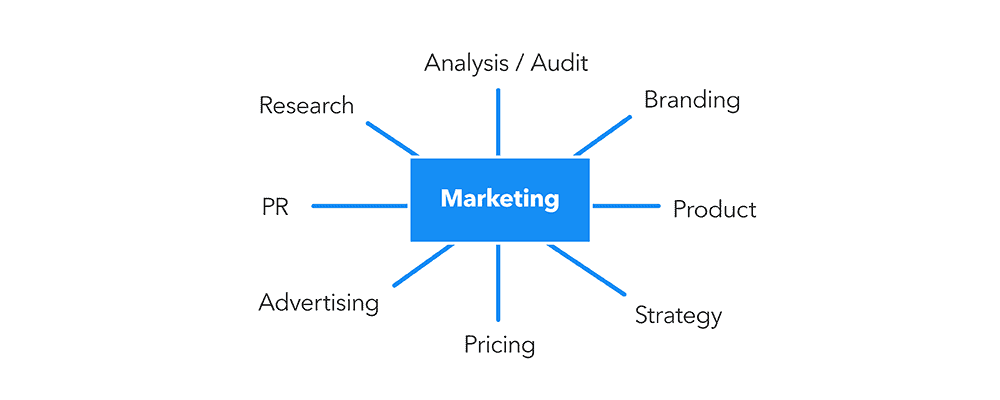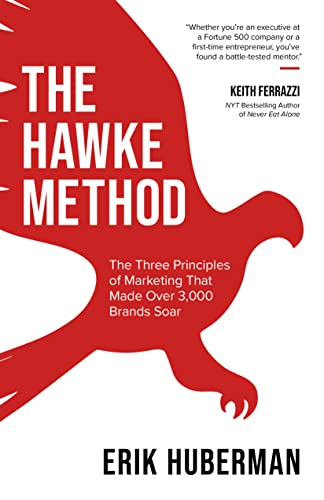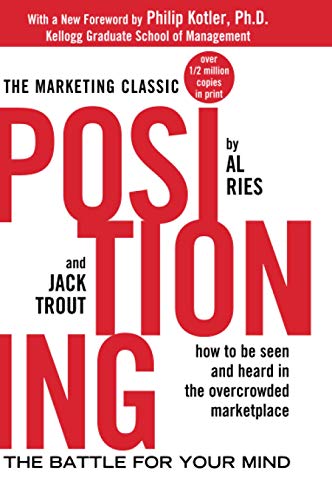
03 Mar What is Brand Marketing?
What is Brand Marketing – Branding vs Marketing Definitions
“Great products sell themselves.”
This famous quote has been shared thousands of times on the internet, and although quality is the essential component of any product or service aspiring to find its audience, some other factors determine its success.
Even the most famous brands in the world heavily promote their products and carefully build brand awareness.
We can only guess whether Apple or Coca-Cola would be among the five world’s most valuable brands if they did not invest all their efforts in brand marketing and positioning.
Now, many people and even some marketers believe that a brand is simply a logo and using a fancy font for a company name, but that is just reducing something profound to visuals.
Let’s discuss this elusive concept and answer the question from the title.
What is a brand?
Back in the second half of the 18th century in the U.S., cattle ranchers used to mark their livestock using a heated branding iron to identify them and prove their ownership.
Around the same time, manufacturers started putting their marks on their packaged goods, in an attempt to be distinguished from their competitors.
This is the birth of branding, but at the time it was still one-dimensional and less sophisticated.
Nowadays, companies have to compete in an oversaturated market, and with the rise of advertising, and the proliferation of social media, the term “brand” has become much more complex and intangible than ever.
It stands for everything that a company represents, and it encompasses its products or services, goals, vision, culture, and core values.
A brand is every company’s golden ticket to success. So, it’s not surprising why many companies deploy digital marketing campaigns to establish a great brand online.
Business owners enhance their websites and social media pages to attract more leads and increase their sales by seeking the help of professional web development and marketing companies, such as the Black Digital Group.
The ‘Brand’ reflects a company’s identity.

Truly successful companies manage to create a brand that elicits certain emotions in their customers.
Coca-Cola is a perfect example of this, as it masterfully crafted a brand that is linked to happiness and joy.
All their commercials revolve around happy people, good times, and sharing special moments, while the scarlet red used as their primary brand colour is experienced as warm and festive by their audience.
It is vital to identify your brand, as it will influence and shape your prospects’ first impression about your company.
Your brand is what will keep your clients coming back for more, it is the foundation upon which you will build consumer loyalty.
Outbrain
Here are some of the most important points that you have to cover when identifying your brand:
- Determine your goals
- Research your target audience’s needs
- Differentiate yourself from your competitors
- Establish your brand’s personality
- Come up with a brand statement.
What is the primary purpose of your brand? What issues does your product or service resolve? Defining your brand’s clear objectives is essential to better position your sales pitches. Knowing and aligning your brand with your audience’s needs can help differentiate yourself from others. You might want to be a niche leader than a take-all player.
Brainstorming with your marketing team to answer and discuss all potential brand aspects is a vital step in brand marketing. Be open to the suggestions of your team members. You can also use customers feedback as a reliable basis to improve your brand marketing tactics.
When you establish a unique personality for your brand, more people will notice you. Following the trends doesn’t always make you win. Sometimes, even a seemingly odd brand strategy can go viral and make an impressive statement to your target audience. For instance, you can showcase your brand’s advocacies through memes, podcasts, or short-form video marketing.
What is brand marketing?
When it comes to brand marketing, its primary goal is to raise brand awareness and visibility and boost your brand recognition.
Then, again, brand marketing is much more than just promotion and advertising.
Customers are exposed to an immense number of various products, services, brands, and companies, and they have an abundance of possible choices.
Of course, their purchasing decisions are not just rational.
In many cases, emotions play a significant role in customer behaviour, and that is exactly what successful brands have in mind when they are making their brand marketing strategies.
“People like brands that are relatable, personable, and human.”
Alternatively, as Simon Sinek insightfully puts it, “People do not buy what you do; they buy why you do it.”

Your audience has to understand what the mission of your brand is, what your core values are, what features and benefits your products have, and brand marketing tries to bring your brand closer to them.
The digital age has enabled brand marketers to access various channels of communication, and take advantage of social media platforms.
On the other hand, building relationships with their customers has never been so demanding, with the fierce competition breathing down their neck.
Choosing the right brand marketing strategy is essential for a successful brand, as not every approach will work for every company.
- Huberman, Erik (Author)
- English (Publication Language)
- 220 Pages – 03/08/2022 (Publication Date) – Morgan James Publishing (Publisher)
Building a strong brand marketing strategy
“Your brand strategy is your most powerful weapon.”
Its function is to help your brand develop and grow by achieving a series of specific goals.
It is, basically, the cornerstone of your branding efforts, that will result in establishing a meaningful, long-term relationship with your audience.
A successful brand marketing strategy allows you to take advantage of advertising, social media channels, marketing, and public relations to establish the essential characteristics of your brand.
Every brand marketing strategy should rely on the following key elements to be effective:
A – Target audience
This is the first step in any marketing or sales strategy, as all your marketing, branding, and advertising efforts will be wasted if you do not have a correctly identified target audience.
Social media networks are a great tool for doing research on the preferences of your customers.
Knowing when and why they are making their purchasing decisions, is vital for fine-tuning your strategy.
Don’t try to appeal to everyone as that will only be counter-productive because your customers will be under the impression that you do not understand and appreciate them.
B – Consistency
Your interaction with your customers has to be consistent, which means that your visual aesthetics, brand tone, and the message should be aligned and recognisable.
Brand Consistency is crucial for establishing trust and loyalty, as your audience has to know your name to be able to identify with it.
For example, colour increases brand recognition by up to 80%, according to a study conducted by the University of Loyola.
The coherence of your message is important, which means that your every post, photo, or ad have to reflect your core values, and your message should be conveyed in your unique and recognisable brand voice.
Nike and its “Just do it” slogan come to mind as a perfect example of consistency with their can-do attitude, displayed in all their marketing and branding efforts.
C – Emotions
We have already discussed the importance of emotions in making buying decisions.
Many brands establish themselves as must-haves using employing emotional branding and creating almost a cult-like following.
Every time Apple releases its new iPhone, their customers stand in lines for a couple of days only to get their hands on this cool device.
Why is that so?
An iPhone is not just your regular smartphone.
It’s emotional value, especially among younger audiences, is huge.
Having it is almost like being a member of an exclusive club.
Psychologically speaking, people need to feel connected to others, they crave the sense of belonging to a group, and that is what Apple gives them, together with the promise of making their lives easier, better, and more fun.
- Gobe, Marc (Author)
- English (Publication Language)
- 360 Pages – 02/09/2010 (Publication Date) – Allworth Press (Publisher)
D – Change
Although this may seem contradictory to the notion of consistency, brands need to be flexible and willing to change to keep up with the latest trends.
These changes do not have to shatter your brand core values or transform your brand voice.
Tweaking your image or making some cosmetic changes to your products is necessary in a competitive, fast-paced market.
You can also focus on changing your advertising and marketing techniques, product names, website, or packaging, and still stay true to your brand identity and core values.
Introducing a fresh approach can result both in keeping your existing customers, and in acquiring new ones.
E – Loyalty
Did you know that a 5% increase in retention leads to a 25% growth in profit?
Therefore, we can conclude that a loyal customer is your greatest asset, so make sure to thank them as often as you can.
There are various methods that you can use, and sometimes a personalised “thank you” letter will do.
However, freebies and swag can do wonders for your brand marketing efforts as people love them.
Although this may seem like a huge investment, it will soon pay off.
So, giving your audience branded merchandise such as pens, T-shirts, bags, USB drives, or notebooks is a nice gesture that will show them you care.
When it comes to big, important, enterprise clients, think about a quality Bluetooth speaker, leather journal or other loyalty merch like a prepaid visa gift card, and you can be sure that they will be thrilled, and reward you with their loyalty as well as with some word-of-mouth marketing.

Brand positioning
Brand-positioning strategies are of vital importance in boosting your brand awareness and visibility.
There are several approaches which differ based on what aspect of your brand and products you want to highlight and emphasise.
- McGraw-Hill Companies
- Al Ries (Author)
- English (Publication Language)
- 224 Pages – 01/03/2001 (Publication Date) – McGraw Hill (Publisher)
This means that you can choose from some of the following strategies:
Quality positioning is usually paired with another approach, mainly because all brands tend to insist on the quality of their products.
That is why it is difficult to stand out, so it is a good idea to select a particular area in which your brand will specialise, and focus on it.
Problem and solution positioning can be a very powerful method, as it addresses your audience’s problems and concerns, and provides a solution to them.
The trick is to identify pain points, find efficient and effective solutions, and show your target audience that with your product or service, their problems will quickly disappear.
Positioning through celebrity endorsement has become very popular.
By choosing a household name, or a star that represents and reflects the core values of your brand, you can gain your target audience’s trust.
This strategy relies on playing the familiarity card as it associates your name with a famous, cool person that everybody knows.
Although it is pretty costly, celebrity-driven positioning ultimately pays off.
Brand marketing can immensely contribute to your brand building process if you develop and implement a comprehensive, data-backed strategy.
The post What is Brand Marketing? is by Stuart and appeared first on Inkbot Design.






